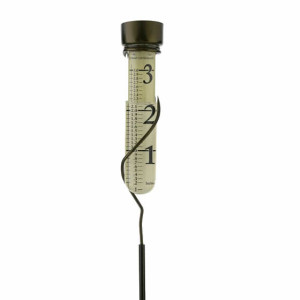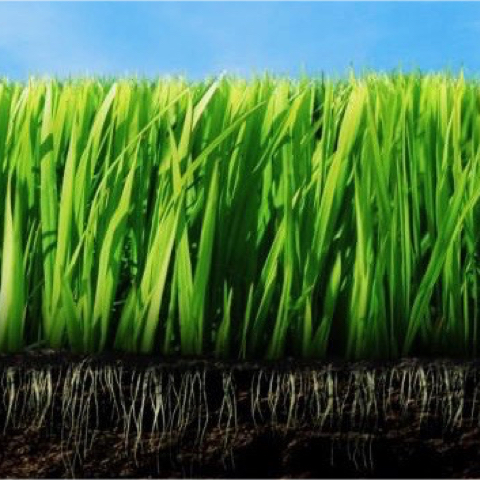Water the Dirt, Not the Grass!
Yes. I said it. Stop watering the grass. The millions of plants that make up your lawn absolutely do need water. That water needs to be deep. Three, four, five, or six inches deep. Proper watering is about 70% of having an awesome lawn! You can throw down the best fertilizers, soil amendments, bio-stimulants, seed, and stuff, but without the right amounts of H2O at the right times, it’s not going to be awesome. It might get better, but not Awesome.
Plants take up water through their root systems and these roots grow towards moisture. Deeper watering means deeper roots. Deeper roots mean access to more moisture. Deeper roots also mean greener, stronger, more drought and stress tolerant grass.
For example, let’s say that I run my sprinkler for 15 minutes every other day. And let’s say that 15 minutes equates to 1/10 of an inch of rain. I’ve maybe just dampened the top 1/4 inch of my soil. When the sun starts beating down, that little bit of moisture evaporates rather quickly and doesn’t have a chance of reaching the roots. My grass plants are still thirsty.
Then, let’s change my sprinkler time to 1 hour and we’ll say that I put out the equivalent of closer to 1/2 inch of rain. There is now more water to penetrate further into the soil. The surface may still dry during a sunny day, but the deeper dirt takes much longer to dry. As I regularly put down a good amount of water, it builds something of a reservoir of moisture below the surface, down in the root zone and away from the sun.

How Much and How Often for Established Lawns
How Much?
Most lawns and grass types in the Virginia Beach area will do well with 1 to 1-1/2 inches of water per week. Over watering can contribute to fungal growth, unwanted weeds, thatch buildup, insect pests, spongy soil, and oxygen deprived root systems. Under watering will result in browning, dry blades and eventually, a very thin lawn. To measure how much water your lawn is getting, place a rain gauge or empty tuna can on your lawn and monitor it.
Longer and Less Often
How and when that water gets delivered is as important as how much. The goal is to keep the soil moist about six inches below the surface. Deep moisture equals deep roots. Some suggest applying the desired amount of water only once a week. Others recommend breaking it down to 2 or 3 times a week. Soil, grass type, and weather conditions will have some impact on which method would be best for your lawn.
Short and frequent watering sessions will result in shallow root systems and a weak lawn susceptible to weeds, drought, and disease.
If you’re unsure, 20 to 30 minutes in each zone 2 to 3 times a week is a good starting point. Go DEEP!

Earlier is Better
Early morning watering will allow the water to soak deeper into the soil before the sun starts beating down. During the hottest times of the day, you will lose a good amount of moisture to evaporation. Sprinkling too late in the day can leave the surface soggy for longer periods and encourage disease and fungus growth.
Too Much Water?
In the heat of summer, you might be concerned about your lawn drying out and decide to make some adjustments to your timer. Be careful with that, because over-watering can be as detrimental to your lawn as under-watering. If you think you might be running the sprinklers a little too often, here are four signs your lawn has had more than enough water.
- Squish: If you’re lawn is constantly wet, soft, muddy, and squishes under your feet, that’s a good indication that you should cut back on the water.
- Runoff: If water is running off into the street or pooling in parts of your yard, scale down the sprinkling. Your soil is saturated.
- A wilted lawn: This one can be confusing because some of the signs that your lawn needs water–like not springing back up when you step on it, and blades of grass curling up–can also be signs of over-watering. If you’ve been dousing your lawn and it still looks like it “needs water,” it could be wilted from over-watering.
- Fungus and weeds: Fungal lawn diseases and some weeds take advantage of moist conditions to spread and thrive. If your lawn has a blight, mold, or patchy weed problems, it’s possible that you’re over-watering. You could also be watering at the wrong time of day. Again, early morning is best, so surface moisture can penetrate and evaporate, as opposed to night, when moisture sits on the lawn for hours before the sun rises.
NOTE: You’ll need to change things up when getting grass seed off to a good start. Click HERE for more on that.
Thanks for reading and Keeping It Green!
